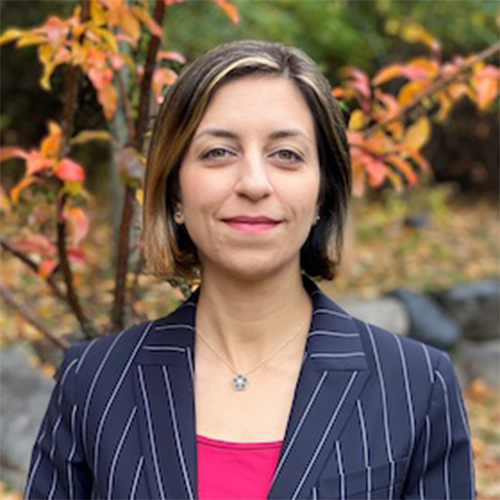Story originally posted on College of Communication Arts and Sciences website

For most of us, getting a vision or hearing test is a routine event. Eyeglasses, contacts and hearing aids enhance the quality of life for untold millions of people. Simply put, having our senses checked just makes sense.
But when was the last time you had your voice checked?
It’s an uncommon procedure, to be sure. Usually, a scratchy throat points to a respiratory illness like a cold or the flu. But what if your everyday speaking voice could indicate an unseen mental health disorder or a neurological problem?
It can, says Department of Communicative Sciences and Disorders associate professor Maryam Naghibolhosseini.
Naghibolhosseini is the recipient of the 2023 Young Investigator Award from Sigma Xi, an international scientific research honor society. Her work was recently featured in the journal American Scientist. Though she directs the MSU Analysis of Voice and Hearing Laboratory, Naghibolhosseini started out in engineering.
“I was always fascinated by physics and mathematics,” she said. “I like the structure and the certainty of algorithmic thinking and discovering physical phenomena that you see around yourself.”
Or, in this case, phenomena that one can hear. Naghibolhosseini became interested in otoacoustic emissions; the science of how the ear generates sound. Her studies naturally brought her to vocal science, which didn’t stray far from her first love of engineering.
“Voice production involves our respiratory system, including our voice box, and then we have our articulatory system, such as our tongue, our teeth and our mouth,” Naghibolhosseini said. “These all shape the sound that we produce. Then the sound that’s generated is traveling through the air toward the listener. So, looking at it from multiple dimensions, it’s actually a bio-physics problem.”
Naghibolhosseini is using a range of technology to look for irregularities in the human voice. One of her most reliable tools is high-speed videoendoscopy.
“We send an endoscope either through the mouth or through the nose, on top of the vocal folds and the back of the tongue,” she said. “We take videos at a remarkably high frame rate that captures thousands of images in just one second of voice production. This tells us how the vocal folds move and vibrate during speech. A disruption in this continuous and harmonious movement could indicate a voice disorder.”
A quivering voice, she says, could be a biomarker that leads to the discovery of a neurological disease in the body. It might also be a means of detecting and evaluating early signs of anxiety and depression. Naghibolhosseini says one day, people might be able to send a recording of their voice to a medical facility that could analyze it for problems and even notify health care professionals.
Naghibolhosseini was named the 2023 Sigma Xi Young Investigator last November. Voice researchers make up a relatively small part of the larger international science community. She says receiving the award from people outside her field was a particularly nice validation.
“It made me really happy knowing that other people can see the value of the work that we are doing,” Naghibolhosseini said. “Hearing what they thought about my research showed me that I’m really on the right track.”
But Naghibolhosseini isn’t lingering long on the praise from her colleagues’ mouths. She has other voices out there that need to be heard.
“The long-term thing that moves us forward in our research is thinking about how our research would positively impact the lives of many people in the future,” Naghibolhosseini said. “The ultimate goal is to be able to help humanity.”
